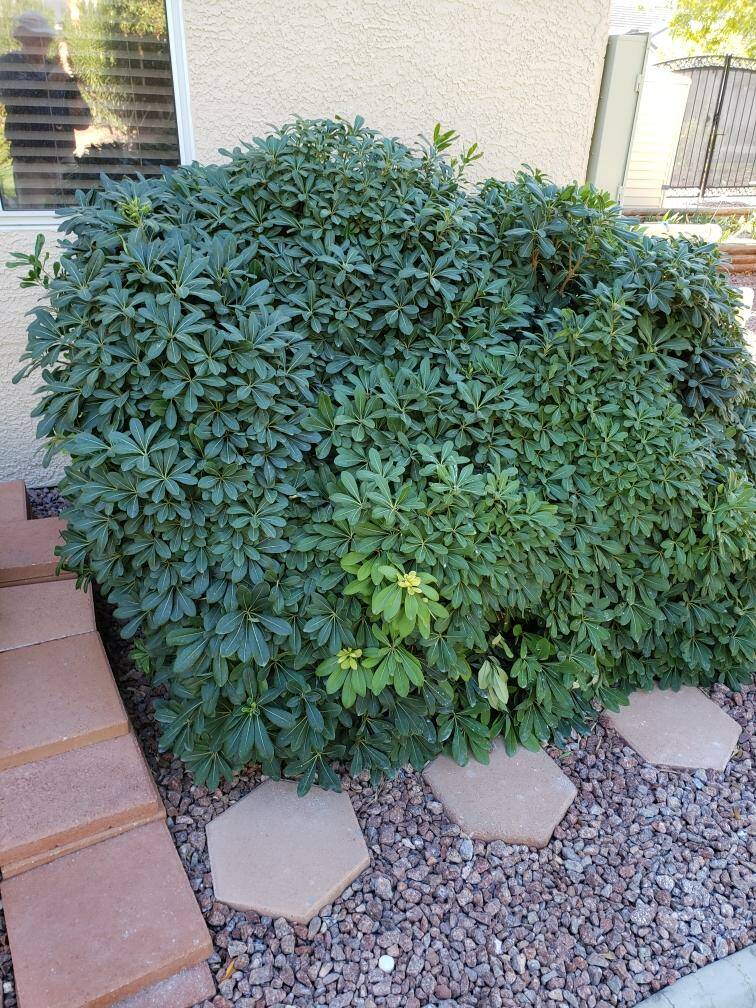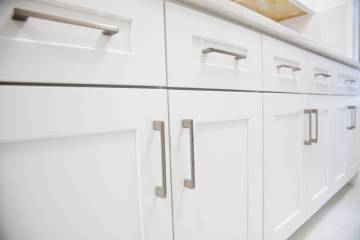Plants placed in 2 categories: Mesic and xeric
We have two general categories of trees and shrubs in Las Vegas regarding their relationship to water, growth and their adaptability to rock covering the surface of the soil: mesic and xeric. These can be subdivided into smaller groups but for our purposes, this should be good enough.
Rather, it is best to think of plants along a continuum (mesic vs. xeric) regarding whether they grow best in dry or wet soil or the type of mulch covering the surface of a landscape soil. So, instead, we group plants into these two categories for convenience.
Why is it important to know if a plant is mesic or xeric? Because whether plants are mesic or xeric affects where they are planted, how they are irrigated, their growth, their survivability, how they respond to soil amendments and whether it’s best to use rock or wood mulch to cover the soil. I wish it was easy, but it’s not.
It all has to do with the organic content of the soil; soils with at least an organic content of 1 to 2 percent have no problems growing mesic or xeric plants common for landscapes. Research has proven this.
But soils with an organic content of less than 1 percent spells trouble for all but the most xeric of plants. Mesic plants are not used to extremely low organic content in soils. They didn’t evolve along with these types of soils.
The general rule of thumb is if a plant can survive our harsh desert climate surrounded by a lawn during the summer, the plant is most likely mesic. Mesic examples include fruit trees, ash trees, Chinese pistache, Carolina cherry laurel, Japanese blueberry, roses, heavenly bamboo, vitex, European olive and many others.
Mesic trees and shrubs grow best in moist soils; they don’t like it overly wet or overly dry for very long. If the soil stays wet or dry for too long, they are damaged. This damage can happen in just a few hours during hot weather or days in cool to colder temperatures.
Along with planting amendments, mesic landscape plants usually grow best in desert soils covered by wood (organics) rather than rock. Some plants are more particular about this than others (think continuum again).
Take photinia (mesic) for instance. It can handle high temperatures (prefers lower temperatures, of course) but can’t handle soil covered in rock after a few years. It looks good at first but increasingly yellows and looks ragged as the organics used in planting run out.
My observations are that plants like photinia usually start looking bad in three to five years after planting. Other plants that fall into the photinia camp are heavenly bamboo (Nandina), roses, most ash trees, jasmine groundcover and others. Some mesic plants like oleander, European olive, Chinese pistache can grow well surrounded by rock but grow even better surrounded by wood chip mulch.
So how do you know how much organics are in your soil? Soil color is usually a good quick judge. The darker the soil, the higher the organics in it. Desert soils with a bare minimum organic content for mesic plants have a mocha color when moist.
Q: I noticed you mention planting different landscape plants either on the east side or west side. When I go to the local nurseries, I never see that mentioned on their tags. If I buy one of these plants, how do I know if a plant is suitable for where I want to put it?
A: The tags for these plants are not made locally. They are provided by a wholesale grower who is growing plants for a very large region. In some parts of that region, some plants might survive the west side OK, but in a desert location, the west side might be too hot.
Plant tags give you general information on where to plant. These wholesale growers are oftentimes located in California, Texas or Florida, and their desert knowledge is not localized.
Some mistakenly think any hot dry location will qualify for the desert. Sometimes that’s true. Usually not in the summer.
All local Las Vegas nurseries are resellers and seldom grow their own plants. The plant tags are so regionalized, they may or may not work in the same location in the desert.
Planting location may not be understood by watching YouTube videos or information from websites. The more experience you have in our climate, the better chance of recommending a plant for the right location. But then it depends on the soil where it was planted.
I like to call our type of horticulture, desert horticulture and not just horticulture. The people who understand it I call desert horticulturists or desert gardeners.
If you grow up in the desert this type of information is frequently intuitive. You may not know why you do it differently, but you know the plants will struggle if you don’t do it a certain way. It is a gut instinct. The science of horticulture doesn’t change, only how the science is applied.
For this reason, I trust landscape suggestions from certain people or sites. One landscape site I visit frequently is the Virtual Library of Phoenix Landscape Plants. I recognize that it is better adapted for the warmer Phoenix area, but the soils and climate are similar enough that I find it very useful.
The information I recommend is a blend of experience with landscape plants sold here, Arizona information, wholesale grower information and my twist on it.
Q: I have an empty planter facing south. The inside diameter is about 3 by 3 feet and plumbed for a water drip system. What kind of small tree can I plant to fill in the space?
A: Hot locations focus on desert or desert-adapted small trees like desert willow, vitex or Texas mountain laurel. The vitex is from the Mediterranean region while the others are Southwest desert natives.
The vitex will tolerate frequent irrigations while the others are iffier. If you fill the planter with plants, then use drip tubing (emitters embedded in the walls). Make sure the plants in the planter irrigated with drip tubing have similar root depths so you can use one electric valve.
If there is a mixture of plants with different spacings and root depths, then use individual drip emitters watered from blank tubing. Individual plants watered with individual drip emitters can have large spaces apart from one another and have a variety of root depths. You will still only need one valve to do that.
Q: I have a couple of older mock orange (dwarf Pittosporum) shrubs about 3 by 3 feet. I would like them about 12 to 18 inches tall and wide instead so they better fit in this spot. The inside of the bush is just stems and branches with all the green leaves on the outside of these bare branches. Will the shrub survive if I prune it? Is now a good time to do this?
A: It will survive if you prune it smaller to just the naked branches, but it will sprout new leaves and grow back slowly. Until it grows back it will be a bunch of stems with no leaves and ugly to look at. It will look naked.
I would delay pruning until you see new growth starting when it gets warm again. This will delay the amount of time you just see bare branches.
I am guessing pruning it in the Las Vegas climate will be sometime in February. Watch for new growth and check your weather app to make sure warm weather will continue to push the new growth. Consider replacing it with a plant that won’t get any larger than the space it is allotted.
Q: We planted two Little Gem magnolias several years ago. We love the flowers and scent they give. They each get a bit of acid and a bit of iron once a year. They also get a dose or two of tree fertilizer. One of the trees is thick and lush, with tons of beautiful blooms. The other one isn’t. Any ideas?
A: Little Gem magnolia is a dwarf variety of magnolia that, in our climate, should grow no taller than about 15 feet. Magnolias, which are mesic trees, generally grow best on the east side of a home or building. This way they get a break from the afternoon sun.
Because they are mesic, they grow best if surrounded by wood chip mulch rather than rock. It goes without saying they should be planted with plenty of rich soil amendments that decompose over time. Irrigation should be applied to at least half the area under the canopy of the tree and water should penetrate to a depth of 18 inches at each application.
Magnolias, with growth tolerances like bay laurel, handle temperatures to about 105 degrees. On very hot days, they struggle if not protected from the afternoon sun and not surrounded by wood chip mulch.
My guess is that the problem is related to the summer and heat and possibly the use of rock mulch around the trees. The acid, iron and fertilizer applications are helpful, but a plant can only endure so much heat at a time.
Bob Morris is a horticulture expert and professor emeritus of the University of Nevada, Las Vegas. Visit his blog at xtremehorticulture.blogspot.com. Send questions to Extremehort@aol.com.























